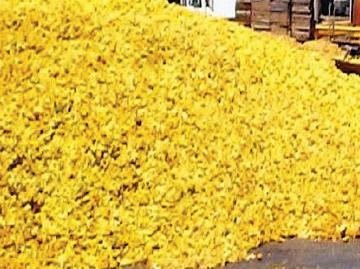
Citrus by-products (Citrus spp)
The term ‘citrus by-product’ includes numerous by-product feedstuffs, which vary according to the originating crop and method of production, that are an important component of ruminant feeding systems in many areas of the world. The genus Citrus includes several important fruits with the most important on a worldwide basis being sweet orange (C. sinensis), lemon (C. limon) and grapefruit (C. paradisi).
Citrus fruits are principally consumed by humans as fresh fruit or processed juice. After juice is extracted from the fruit, there remains a residue comprised of peel (flavedo and albedo), pulp (juice sac residue), rag (membranes and cores) and seeds. These components, either individually or in various combinations, are the source materials from which citrus by-product feedstuffs (BPF) are produced. In India total availability of grape and orange waste is about 2.20 million tones.
Nutritive value
The nutrient content of citrus BPF is influenced by factors that include the source of the fruit and type of processing (Ammerman and Henry, 1991). The nutrient composition of citrus wastes varies depending on the type of waste and type of fruit. The selected values for total ash, crude fat, crude fibre, crude protein, NFE, total sugar, lignin and pectin ranges from 1.7-7%, 1.2-2.1%, 5.7-8.6%, 2.2-4.2%, 65-75%, 10.2-16.5%, 1.3-6.5% and 4.4-12.8% respectively, for different types of wastes (Javed Ali et al., 2010).
Inclusion
The fresh citrus pulp waste is palatable to cattle, when they are accustomed to the feed and a mature cow can consume about 10 kg per day. Dried citrus pulp has been used as the main energy source for beef cattle and heifers, and up to 45 percent has been used in rations. However, the pulp should not be used at high levels for milking cows as milk production tends to decrease. Digestibility trials with sheep show that its digestibility decreases when citrus pulp is included at levels in excess of 30 percent of the ration (Gohl,
1978). It is more advantageous to mix the fresh pulp with partially dried grass or with legumes which cannot be successfully ensiled on their own.
